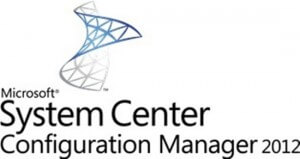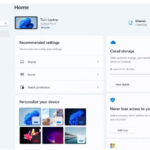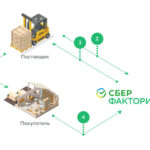
Автор:
Производитель: CBT Nuggets
Год выпуска: 2013
Продолжительность: 10:31:28
Тип материала: Видеоурок
Язык: Английский
Стоимость: 1999 рублей
Описание:
This System Center video training with Greg Shields covers how to manage the infrastructure of Microsoft’s latest version of Windows, through topics such as deploying ConfigMgr clients and managing client settings, and more.
Related Area of Expertise:
Microsoft System Center
Recommended skills:
Experience working with System Center Configuration Manager 2012, Windows Server, security, and networking experience in an enterprise environment
Basic knowledge of Microsoft SQL Server and Windows PowerShell knowledge, mobile device management, and application configuration
One to three years of experience supporting multiple desktop and server computers running the Windows Server OS in medium to large organizations
Recommended equipment:
Microsoft System Center 2012 Configuration Manager
Related certifications:
MCTS: Administering and Deploying System Center 2012 Configuration Manager
Related job functions:
IT professionals
How do you manage a Windows infrastructure? Installing applications by walking around is so 1990. Automation is the name of today’s game, and nothing spells Windows automation like System Center Configuration Manager. Automation has been called the Windows Administrator’s force multiplier. With the right tools, it enables a well-prepared administrator to monitor and enact change to exactly the right devices at exactly the right time.
Prepping you to use those tools and wield that incredible power is the reason behind this video course. This course delivers a broad and deep exposure into Microsoft’s ConfigMgr 2012. Greg has been working with ConfigMgr since its early days as SMS 2.0. Throughout the years, he has developed a second sense for managing Windows desktops and servers with this powerful toolkit. He shares from his personal experience in this course to deliver not only the science (what buttons to click), but also the art (why you should click them) of managing a Windows infrastructure with ConfigMgr 2012.
You’ll learn how to package and deploy software and virtual applications, as well as how to automate everything from individual configurations to entire OS deployments. You’ll learn the foundations of what you need to know for certification success, but you’ll also learn a few ConfigMgr best practices the consultants rarely share.
In a Windows world where clicking Next, Next, Finish is no longer good enough. Smart IT professionals know that automation savvy is key to guaranteed employment. Join Greg in this ConfigMgr 2012 course and deep dive to develop exactly those skills that’ll make you the Most Valuable Professional of your own IT organization.
[wpspoiler name="Подробное описание" ]
1. Introduction to System Center 2012, ConfigMgr 2012, and the 70-243 Exam (00:17:14)
ConfigMgr 2012 is but one of the eight products that comprise Microsoft’s System Center portfolio. It is also one of the oldest, and potentially the most powerful. Kick off your training by understanding what you’ll need to know for this course and taking that 70-243 exam.
2. Understanding the ConfigMgr Architecture and Components (00:13:38)
With an understanding of ConfigMgr’s fit as a product, your next task is to understand how its various functions interrelate. ConfigMgr has been around since 1994, making it an extremely mature and full-featured solution. All those functions can also make it a bit overwhelming for the newbie ConfigMgr administrator. Join Greg in this high-level introduction of ConfigMgr’s architecture and components and leave with a better understanding of the solution you’re about to learn.
3. Preparing for and Installing ConfigMgr 2012 (00:40:36)
Every good product starts with an installation, and ConfigMgr is no different. While installing the ConfigMgr product is a task that’s far easier today than in previous versions, there are still a few prerequisites and gotchas you’ll need to know. Get those, and get started quickly in this Nugget.
4. Setting Boundaries and Enabling Discovery Methods (00:25:10)
With an installed and functioning ConfigMgr site and site server, your next task involves setting the boundaries for management and enabling ConfigMgr’s various discovery methods. Doing so seems trivial, but a wrong move here could have huge impacts down the road. Greg shares the click-by-click and the best practices in this Nugget.
5. Deploying ConfigMgr Clients and Managing Client Settings (00:38:27)
One of ConfigMgr’s most difficult tasks is client management, making sure clients exist where they should (and don’t where they shouldn’t). This task was a nightmarish chore in previous ConfigMgr versions, and gets only a bit better in this one. In this Nugget, Greg delivers the step-by-step to get clients delivered effectively, and shares a few key suggestions for configuring their settings to get the best experience.
6. Collecting Inventory and Creating Simple Collections (00:29:03)
Data in a ConfigMgr system is gathered through what is really a two-step process. The first step often involves discovery information. That process brings data to ConfigMgr that can then be used in the second process: Inventory. Gathering inventory and using that data to create simple collections is the topic in this Nugget.
7. Constructing Queries and Building Query-based Collections (00:35:51)
Another of the sometimes-incredibly challenging activities in ConfigMgr is creating queries and query-based collections. At fault is ConfigMgr’s interface, which even in this version is far from beginner-friendly. But coming to the rescue are a few tricks involving SQL Views that make performing this task far easier. Greg shows you how, and shares a few of his lessons learned in this Nugget.
8. Creating and Managing Reports (00:24:17)
Just when you thought you had queries, WQL, and the ConfigMgr console figured out, you realize that creating reports requires an entirely new skill set. Reports in ConfigMgr 2012 can be ridiculously customized, if you know what you’re doing. Learn how in this Nugget.
9. Packaging Software for Local Installation and Application Virtualization (00:30:21)
Take a look through Microsoft’s ConfigMgr documentation and nowhere will you ever find help in packaging software. That’s the process that “quiets” an installation, enabling it to execute automatically. That said, experience in packaging software for installation or App-V virtualization is the first step in any software deployment. Greg’s been packaging software for over a decade, and in this CBT Nuggets “Special Edition” Nugget he shares the tips and tools you’ll need to perform this task successfully.
10. Software Distribution the Old Way: Packages and Programs (00:42:16)
Armed with a silenced software package, you’re ready to deploy applications anywhere with a ConfigMgr client. All you need is a little help in creating Packages and Programs. Technically, the Packages and Programs method is ConfigMgr 2012’s “old way," but you’ll need the steps here if you’re ever to be successful with deploying the “new way” with Applications. Kick off your learning with this deep dive on the fundamentals of distributing software.
11. Software Distribution the New Way: Applications! (00:49:55)
One of ConfigMgr 2012’s new features is an entirely new user-centric application deployment model that Microsoft calls: Applications! Designed around delivering apps to users (as opposed to computers in the Packages and Programs approach), this new approach revolutionizes how we connect users with their applications and data. That said, being successful here requires extra effort and smart thinking. Greg got you started in that last Nugget, and finishes the job in this one. You’ll never walk around with DVDs ever again.
12. Deploying Operating Systems (01:06:30)
Deploying an application? No problem. But an entire OS? Also no problem with the help of ConfigMgr. In this critically important Nugget, you’ll learn about User State Migration Tool (USMT), ConfigMgr Task Sequences, along with all the necessary skills you need to deploy operating systems. Better yet, Greg will share a few key tricks you can implement immediately that will enable users to refresh their own computers. Who knows? With a bit of up-front effort, you could realistically create a situation where you’ll never need to troubleshoot desktop problems again. Don’t believe it? Watch this Nugget to find out how.
13. Deploying Software Updates (00:39:40)
You’ve mastered WSUS, but how confident are you in the WSUS reporting engine? Reporting on patching success means delivering the right metrics for all the right computers. Software updates in ConfigMgr 2012 gain some major improvements that make this upgrade worth the effort, like Automatic Deployment Rules that eliminate the scut work in patch deployment and updated reports that prove your compliance. Learn about all these and more in this Nugget.
14. Deploying and Managing Compliance Baselines (00:25:39)
With software, operating systems, and updates under your belt, you’re almost ready for complete automation. One final step remains: Controlling configurations. ConfigMgr 2007’s DCM was a feature worth overlooking. No more with Compliance Baselines in ConfigMgr 2012. In this all-important Nugget, Greg shows you exactly how important this new feature can be for completely automating your Windows administration. You’ll learn how to find the configurations worth controlling, and how to build your own compliance settings to keep every application in check.
15. Metering Software Usage (00:09:43)
Every IT environment has “those apps," those you know haven’t been used in years even though you’re still responsible for them. Not to mention “those users," the ones who demand certain expensive applications that they rarely use. It’s hard to prove them wrong, or at least it used to be before ConfigMgr Metering Rules. With ConfigMgr Metering Rules you can measure exactly how many minutes a month “those apps” get used and “those users” use them. Save your company money, and pay for your ConfigMgr investment with just a single feature by watching this Nugget.
16. Managing Forefront Endpoint Protection Settings (00:14:44)
ConfigMgr 2012 merges with Microsoft Forefront in this version to deliver comprehensive endpoint security. With a separate license and a few extra steps, you’ll be protecting your clients and managing their configurations – all from the same comfortable instance. Greg shows you all the setup, as well as the ongoing management in this Nugget.
17. Managing Mobile Devices and Securing Client Communication (00:51:16)
Every so often a Nugget gets released that pays for your entire training. This could be that Nugget. Configuring HTTPS client communication and mutual authentication isn’t a task taken lightly. Back in ConfigMgr 2007 it was called “Native Mode," and almost everyone ignored it. Complete client security and complete mobile device management are back in 2012, but they’re no less challenging to implement. Learn the exact step-by-step to secure your client communication and enable mobile device management in this not-to-be-missed Nugget.
18. Monitoring and Managing Site and Client Status (00:26:46)
Every Nugget training course has its “miscellaneous” topic. While no less important, Greg collects a variety of site and client management and monitoring topics into this kitchen sink Nugget. In it he explains working with alerts, power management, remote control settings, site, component, and client status, site maintenance tasks, backups, and Wake on LAN settings. Like any good server, ConfigMgr requires regular care and feeding. Getting that done right is the topic for this Nugget.
19. Implementing ConfigMgr Role-based Security (00:15:15)
ConfigMgr 2007’s security model was AMPITA – A Major Pain in the Administrator. Delegating permissions to administrators in 2012 gets better…just a bit. Greg gives you the shortcuts you need to set permissions successfully in this Nugget.
20. Planning and Implementing a ConfigMgr Site Hierarchy (00:35:07)
Nineteen videos later and your ConfigMgr experience is nearly complete. Yet there’s one last topic that you absolutely can’t miss. So far, you’ve been working in a single-server and single-site environment. That architecture can’t scale. Creating one that can requires a bit of extra thinking. Don’t make the easy mistakes in extending your environment past one server and site. Join Greg in this 20th and final video to get the smart strategies for implementing your ConfigMgr site hierarchy.
[/wpspoiler]



